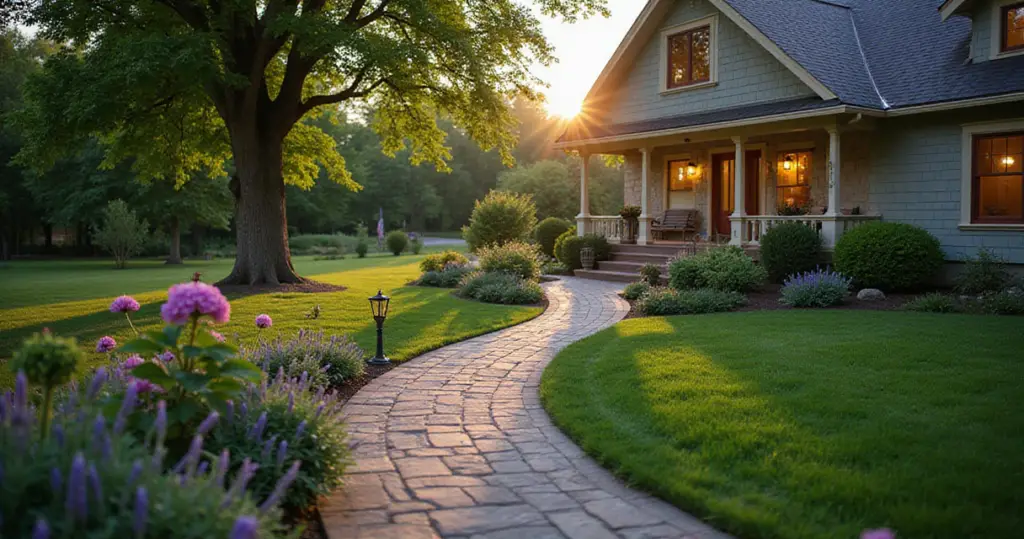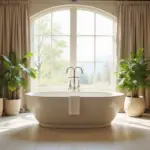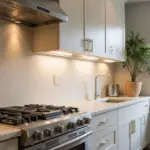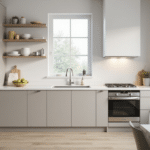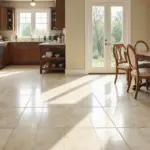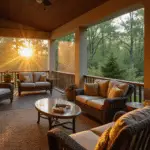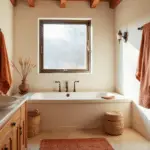Your front yard is your home’s handshake—the first impression it makes on guests, neighbors, and even potential buyers. It’s not just grass and shrubs; it’s a canvas waiting for transformation. Ready to create a space that reflects your style while boosting your home’s appeal? Let’s explore these 18 front yard design concepts that blend beauty with functionality.
1. Craft a Welcoming Walkway: The Path to First Impressions
Your walkway sets the stage for your entire property. It’s the initial contact point for visitors, guiding them toward your front door while showcasing your attention to detail. A thoughtfully designed path can enhance your home’s perceived value, while a neglected one might suggest the same about the property itself.
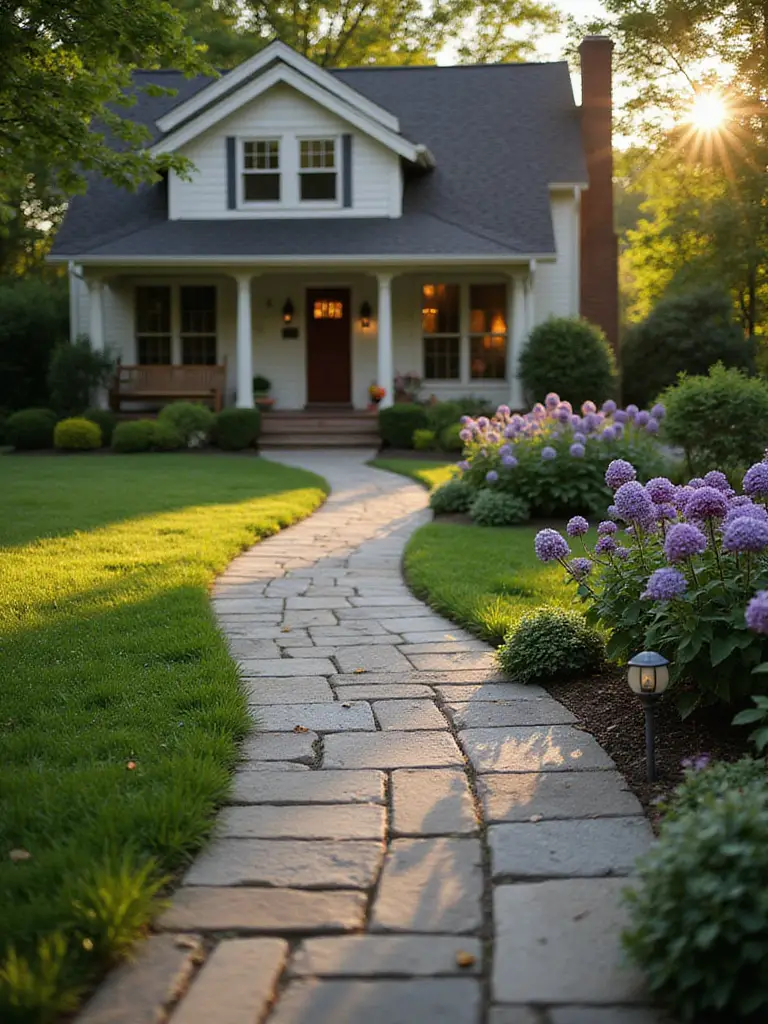
When selecting materials, consider both aesthetics and practicality. Natural stone complements traditional homes, while sleek concrete pavers work well with modern architecture. Incorporate subtle lighting along the edges to highlight the path’s features while providing safety after dark.
Here’s where it gets interesting… your walkway doesn’t just lead to your door—it tells visitors what to expect when they arrive. Let’s see how your front door can continue this conversation.
2. Make a Statement: Front Door Colors That Capture Attention
Think of your front door as the exclamation point of your home’s façade. This small area has enormous potential to inject personality and style into your front yard design. A bold color creates a focal point that immediately draws the eye and makes a memorable impression.
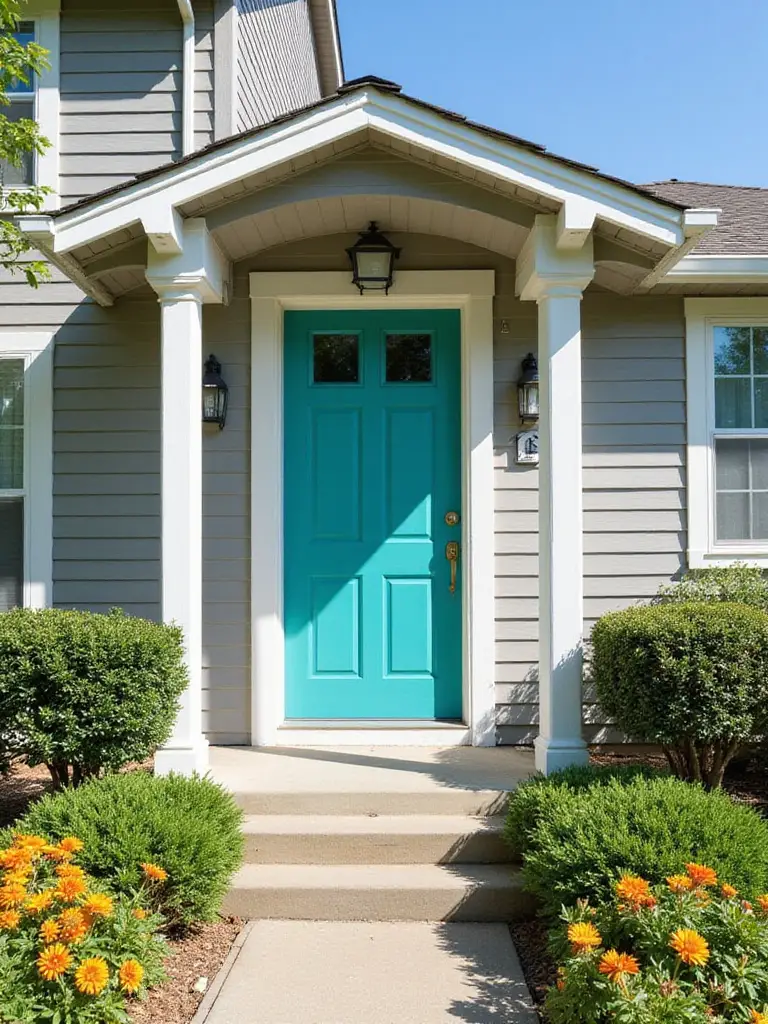
- Deep navy blue suggests stability and pairs well with traditional architecture
- Bright red conveys energy and welcomes good fortune in many cultures
- Sunny yellow brings cheerfulness and stands out beautifully against neutral exteriors
- Teal or turquoise offers a fresh, coastal vibe that feels both modern and timeless
The tricky part is choosing a color that complements your home’s existing palette while making the statement you want. Once you’ve created this bold entrance, it’s time to add depth to your front yard with strategic planting.
3. Layer Like a Pro: Creating Depth with Multi-Tiered Plantings
Imagine stepping into a garden that unfolds before you, revealing layers of texture, color, and height. This is the magic of multi-tiered plantings in front yard design. Layering creates visual depth and dimension, transforming flat, ordinary beds into dynamic landscapes that naturally draw the eye.
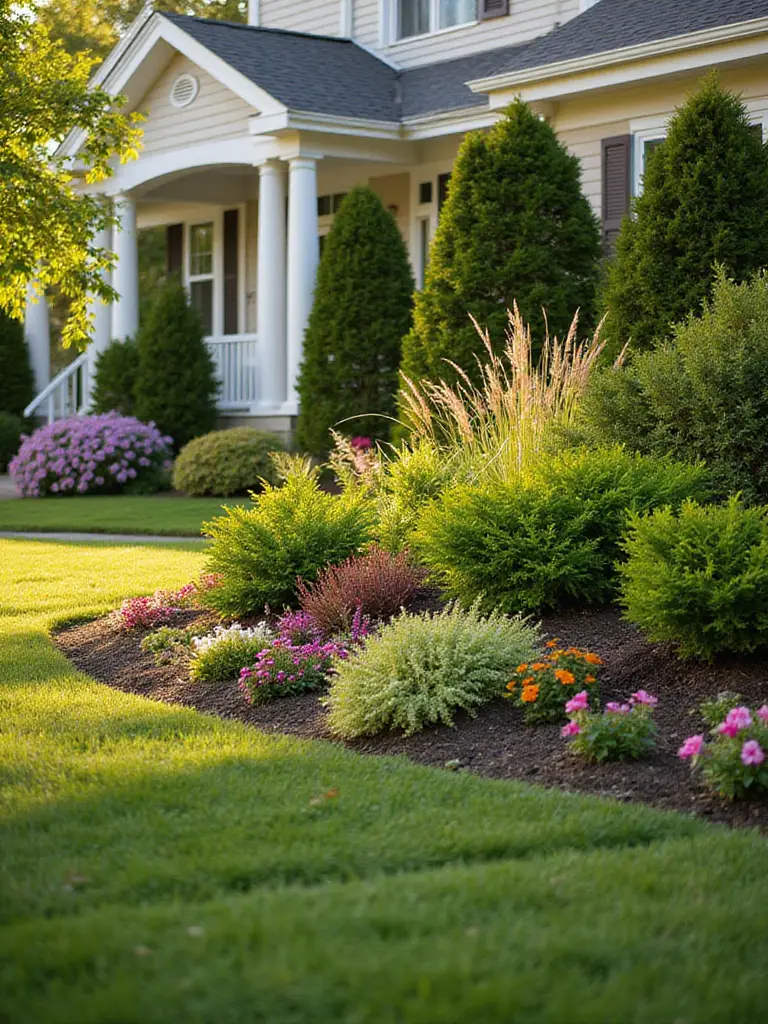
When planning your layers, follow these principles Tall plants at the back, medium in the middle, shorter in front
- Consider mature sizes to prevent overcrowding
- Mix textures and forms for visual contrast
- Stagger bloom times for continuous interest
- Ensure all plants have compatible light and water needs
My breakthrough came when I realized layering mimics natural ecosystems, creating more sustainable and biodiverse front yards. Now let’s explore how to maintain this beauty with less effort.
4. Embrace Effortless Beauty: Low-Maintenance Groundcover Solutions
Tired of endless mowing and watering? Groundcover might be your front yard’s best friend. These plants offer numerous advantages over traditional lawns—they require less maintenance, suppress weeds naturally, and many varieties are drought-tolerant, saving you time and resources.
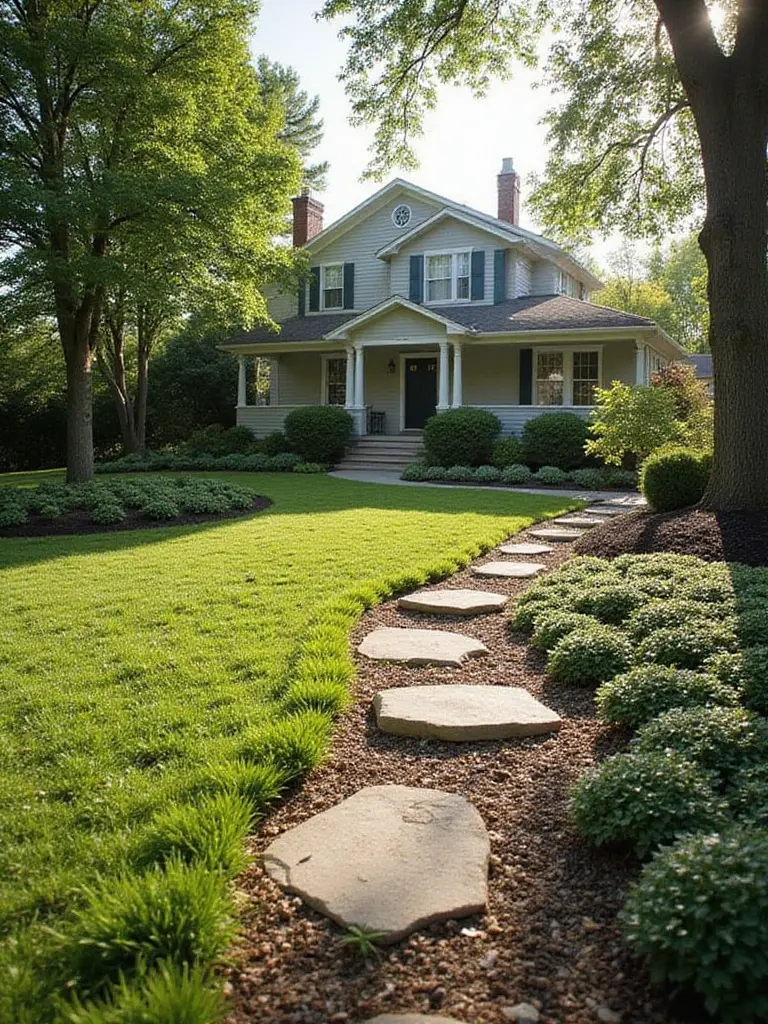
For sunny spots, consider creeping thyme, sedum varieties, or woolly thyme with their interesting textures and drought resistance. Shadier areas welcome pachysandra, vinca minor, or lilyturf (Liriope). Some groundcovers even release pleasant fragrances when walked upon, adding another sensory dimension to your front yard design.
Let me paint you a picture… of your yard covered in a lush carpet of green (or other colors!) with barely any maintenance required. But what about adding vibrant pops of color throughout the year?
5. Inject Seasonal Joy: Creating Year-Round Color in Your Front Yard Design
Imagine your front yard as a living painting, constantly evolving with the seasons. Year-round color prevents your landscape from looking drab during colder months while creating a welcoming impression that boosts your property’s aesthetic value.
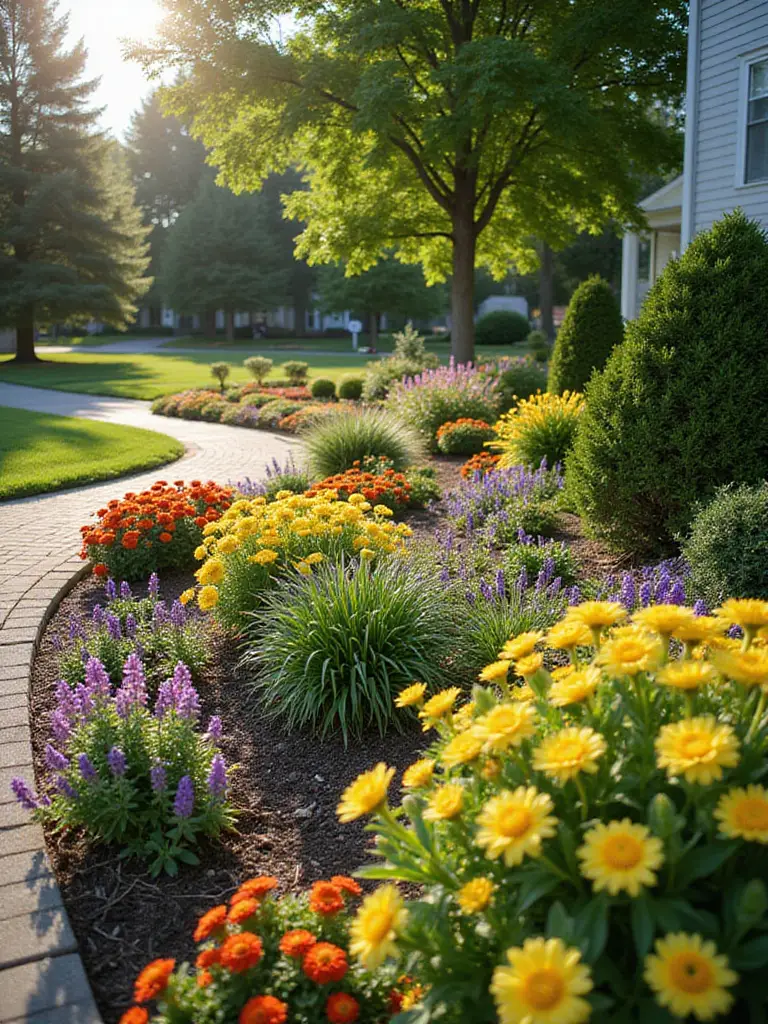
Planning for continuous bloom requires strategic plant selection:
“The secret to year-round color is thinking beyond flowers. Consider foliage, bark, and even garden art to maintain visual interest when nothing is blooming.”
Succession planting is your secret weapon—plant spring bulbs in fall, followed by summer perennials after the bulbs fade. As summer plants wane, add fall bloomers like mums and asters. Incorporate evergreens and ornamental grasses for winter structure and movement.
What really matters here is creating transitions between seasons that feel natural and deliberate. Now, let’s think about how to make your front yard shine even after sunset.
6. Illuminate the Night: Strategic Lighting for Safety and Ambiance
As dusk settles, your front yard design shouldn’t disappear into darkness. Well-planned lighting extends its beauty into evening hours while enhancing safety and security—a win-win for both aesthetics and practicality.
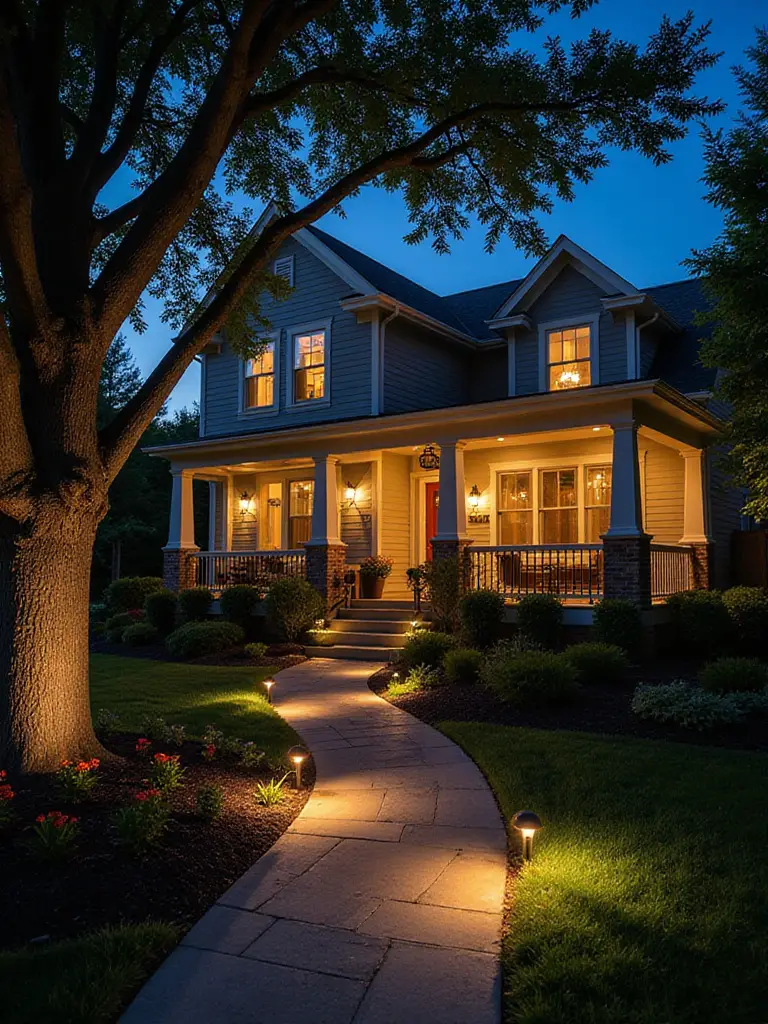
Mix lighting types for the best effect: pathway lights guide safe navigation, spotlights highlight trees or architectural details, and well lights provide subtle ground-level illumination. For a festive touch, string lights draped through trees create instant magic. Remember that less is often more—avoid the “airport runway” effect by keeping lighting subtle and strategic.
The game-changer happened as I discovered how lighting can increase a home’s value by up to 20% while deterring potential intruders. With your yard beautifully illuminated, let’s define your garden beds with crisp, clean edges.
7. Define Your Design: Edging Techniques for Polished Garden Beds
Think of edging as the picture frame for your garden beds—it provides definition that elevates your entire front yard design. Good edging creates visual separation between spaces while preventing grass from invading your carefully cultivated beds and keeping mulch where it belongs.
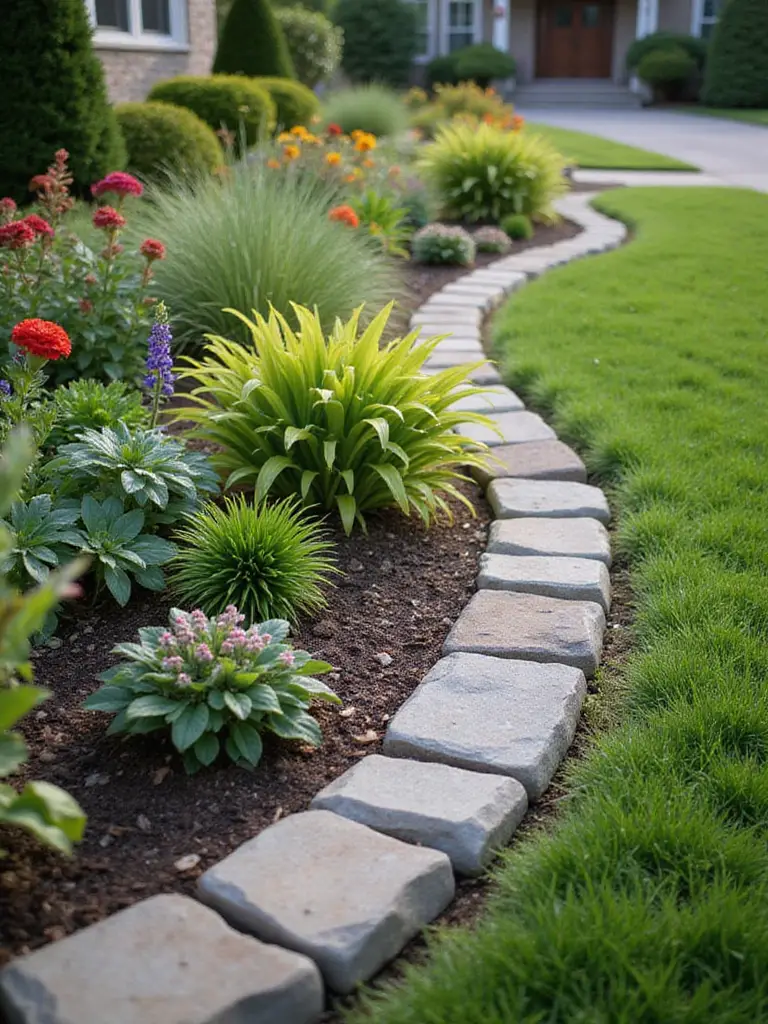
Material choices abound Metal edging offers clean lines and modern appeal
- Brick creates classic, timeless borders
- Natural stone provides organic, rustic charm
- Concrete delivers durability and versatility
- Wood brings warmth and natural texture
The heart of the matter is installing your edging properly—generally 4-6 inches deep to effectively block grass and weeds. With defined garden beds in place, let’s explore adding vertical interest to your front yard.
8. Go Vertical: Using Climbing Plants and Trellises for Height
Don’t limit your front yard design to the horizontal plane! Vertical elements add a whole new dimension, drawing the eye upward and creating a sense of height and grandeur even in smaller spaces. Climbing plants on trellises, arbors, or pergolas break up horizontal lines while softening hard architectural features.
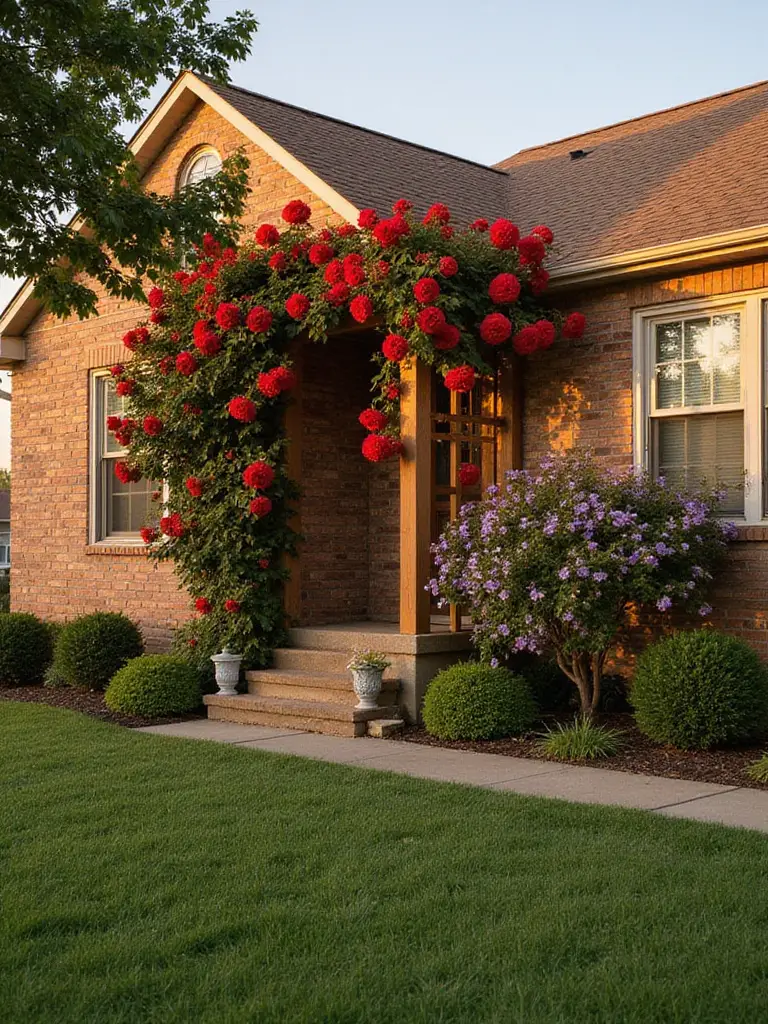
Choose climbers suited to your conditions: clematis for beautiful flowers, climbing roses for classic charm, honeysuckle to attract hummingbirds, or ivy for dense coverage (though be cautious as some varieties can be invasive). The supporting structure should complement your home’s style while being sturdy enough to support mature plants.
Things took an interesting turn when I discovered that some climbing plants, like wisteria, can live for over 100 years, becoming living heirlooms. Now, let’s create a space where you can relax and enjoy your beautiful front yard.
9. Create a Front Yard Oasis: Seating Areas That Invite Relaxation
Imagine sipping morning coffee or watching the sunset from your front yard. Adding seating transforms your front yard design from purely functional to genuinely inviting. It suggests a home that’s lived in and enjoyed, instantly boosting curb appeal while creating opportunities for neighborhood connection.
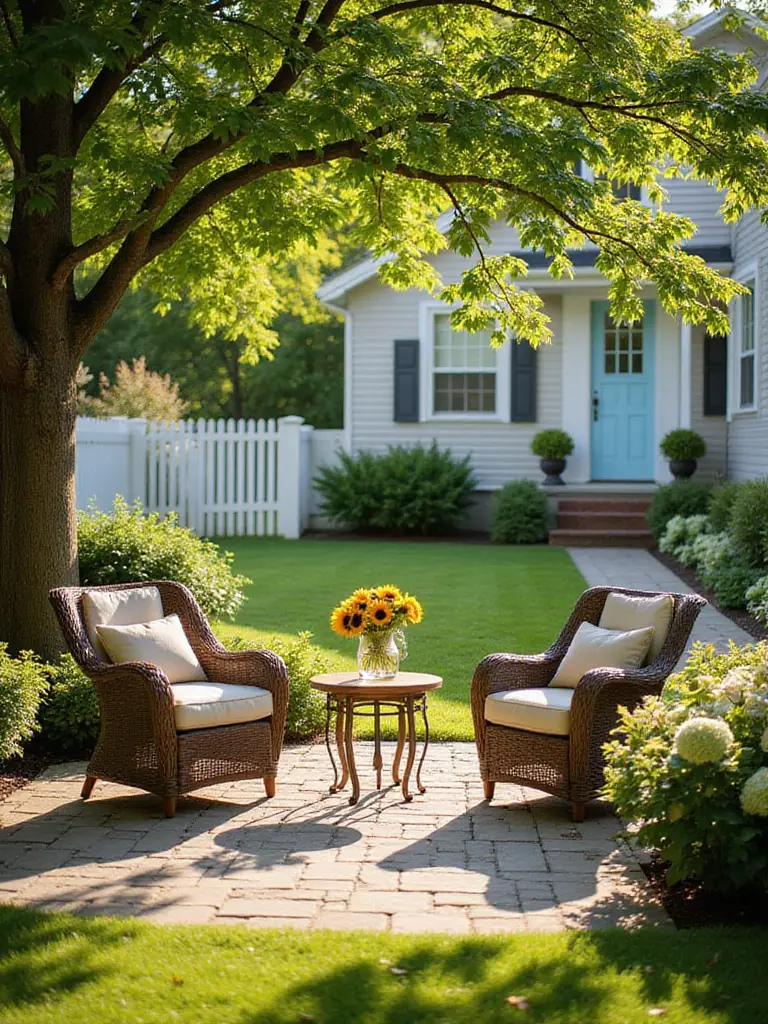
Weather-resistant materials like teak, cedar, recycled plastic, or powder-coated metal ensure longevity. Consider the scale—Adirondack chairs or rockers work well in traditional settings, while sleek benches complement modern homes. Add cushions and throws for comfort and style, and perhaps a small fire feature for cool evenings.
The potential here is enormous for creating a gathering space that extends your living area outdoors. But what about privacy in your front yard retreat?
10. Design for Privacy: Strategic Planting for Seclusion
While a welcoming front yard is desirable, a sense of privacy makes it more enjoyable. Thoughtful front yard design can create secluded spaces without appearing unwelcoming or fortress-like.
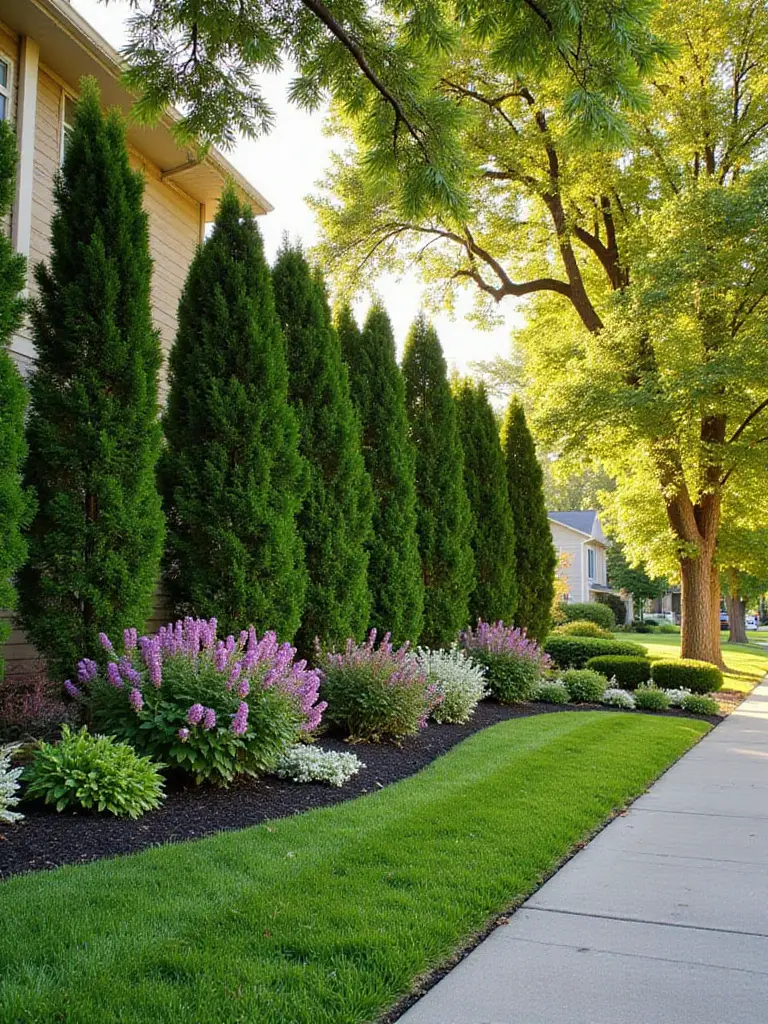
Evergreen shrubs and hedges provide year-round screening—consider Arborvitae, Boxwood, Yew, or Holly depending on your climate and space. For seasonal privacy with added interest, flowering shrubs like Hydrangea or Lilac offer beautiful blooms alongside screening benefits. The ideal height is typically 4-6 feet—tall enough for seated privacy without creating an imposing barrier.
Do you see how huge that is? You can create a space that feels private and secluded while still maintaining curb appeal. Now let’s explore how to make your front yard design more sustainable.
11. Garden Smart, Not Hard: Drought-Tolerant Front Yard Design
In today’s climate-conscious world, water conservation is increasingly important. Drought-tolerant plants offer beautiful and sustainable solutions for front yard design that save resources while reducing maintenance needs.
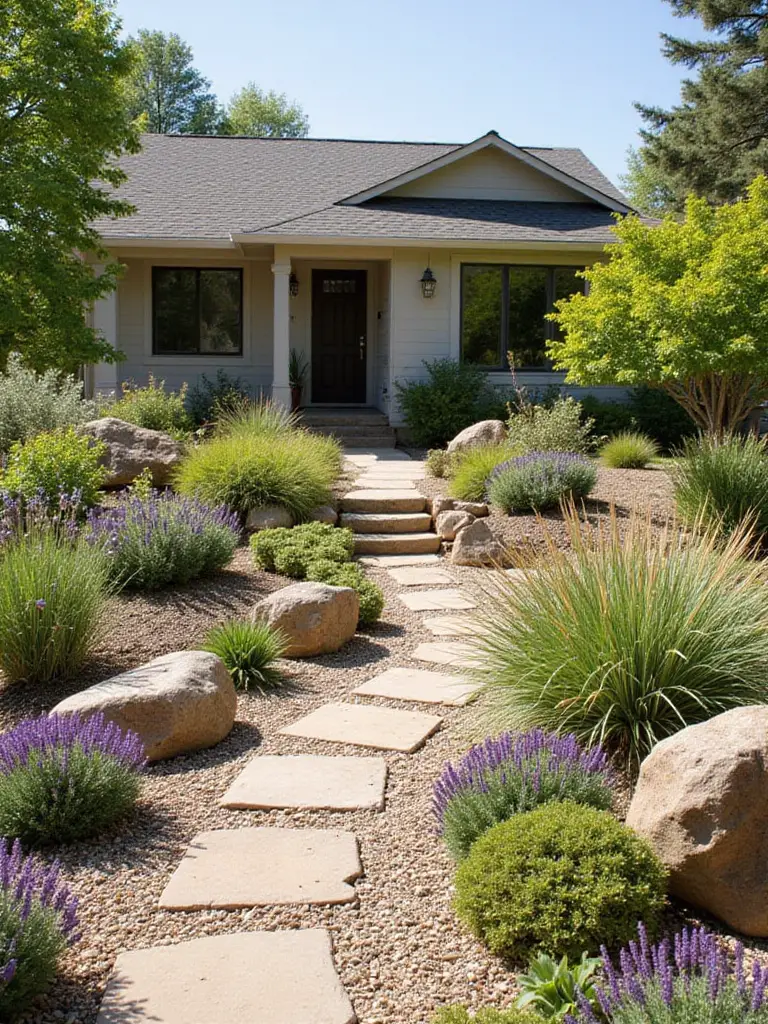
Popular drought-resistant options include Lavender with its fragrant purple blooms
- Sedum (stonecrop) in various textures and colors
- Ornamental grasses that add movement and sound
- Native wildflowers adapted to your local conditions
- Yucca and agave for architectural interest
- Russian sage for its airy purple spires
My experience went like this… after switching to drought-tolerant plants, I cut my water bill by half while spending less time on maintenance. My front yard looked better than ever! Now let’s focus on creating a welcoming entrance with your porch.
12. Elevate Your Entry: Creating a Welcoming Porch in Your Front Yard Design
Your porch is the transition zone between public and private realms—a critical element in front yard design that sets the tone for your entire home. A well-designed porch signals hospitality and comfort while creating a space to enjoy your neighborhood.
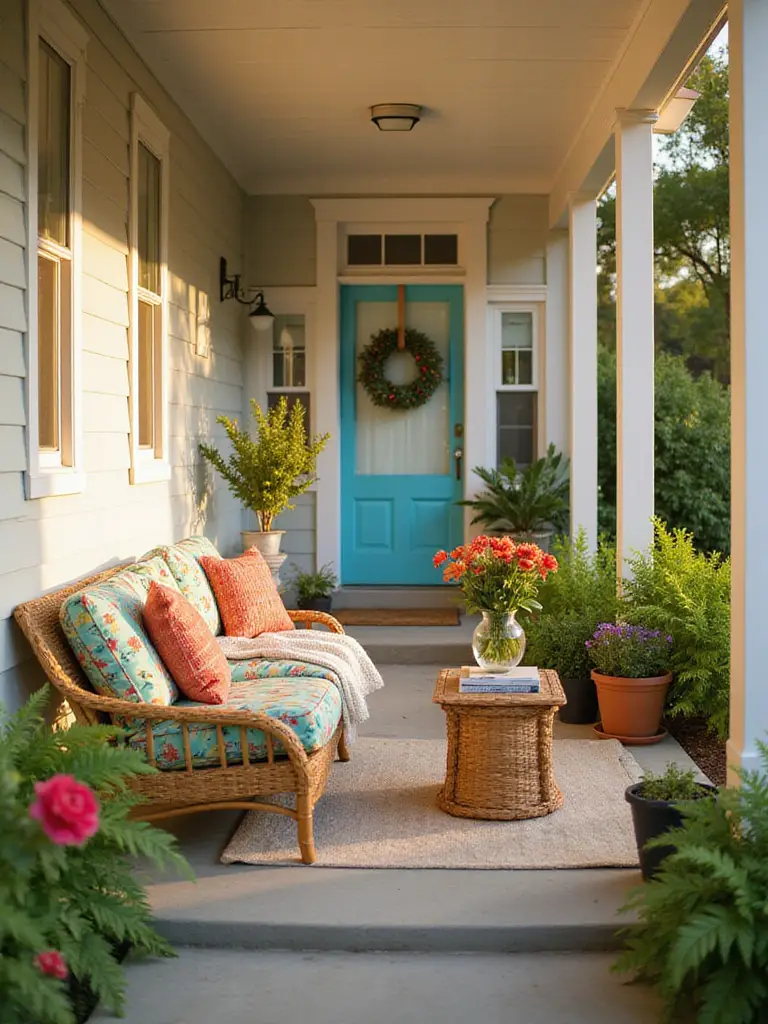
Essential elements include comfortable seating scaled to your porch size, small tables for drinks or books, and personal touches that reflect your style. Add potted plants at varying heights, outdoor pillows in coordinating colors, and ambient lighting from string lights or lanterns. A quality welcome mat completes the invitation.
It works something like this… your porch becomes an outdoor room that extends your living space while connecting you to your community. Speaking of natural elements, let’s explore how stone can enhance your front yard design.
13. Embrace Natural Textures: Incorporating Stone for Timeless Appeal
Stone brings an element of permanence and natural beauty to front yard design. Its varied textures and colors can complement any architectural style while serving practical functions like creating pathways, defining spaces, or managing drainage.
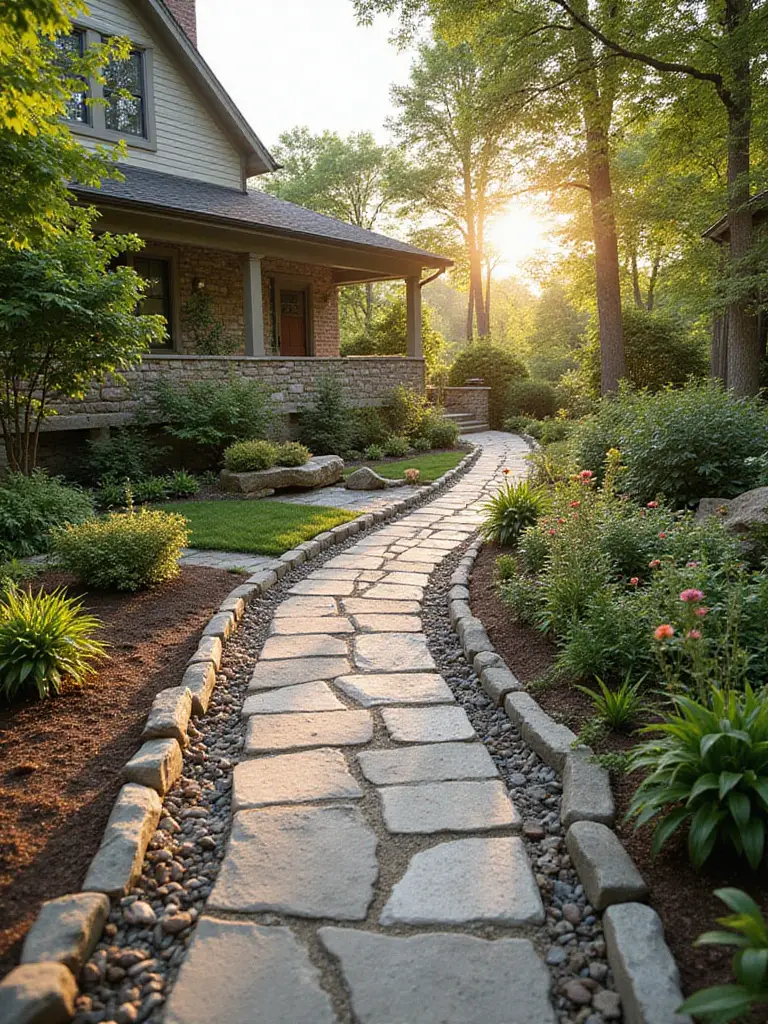
Consider flagstone for pathways and patios, river rock for garden beds and dry creek features, cobblestone for classic European charm, or granite for durable walls and steps. Beyond aesthetics, stone improves functionality—creating level planting areas on slopes, providing stable walkways, and enhancing drainage patterns.
You might be wondering… how to balance stone with softer elements. That’s where proper mulching comes in to complete your front yard design.
14. Mulch Magic: Enhancing Beds and Controlling Weeds
Mulch is the unsung hero of front yard design, working tirelessly to improve soil health, suppress weeds, and create a polished look. A 2-4 inch layer of quality mulch transforms garden beds instantly while reducing maintenance needs.
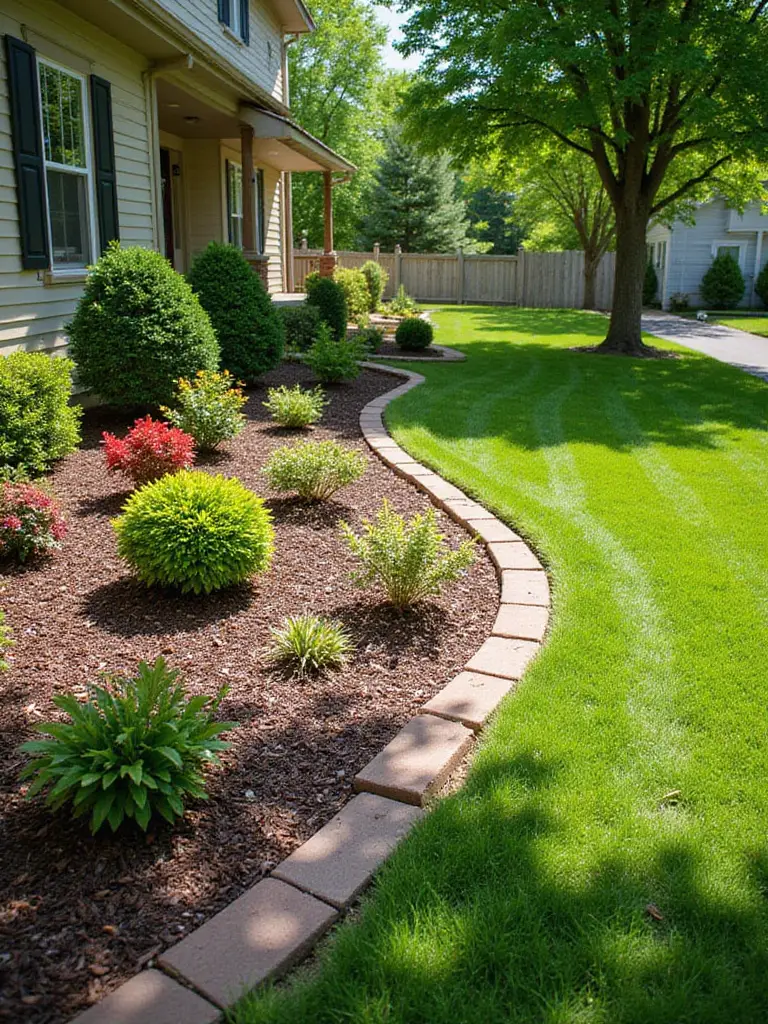
Choose your mulch based on aesthetics and function Wood chips and shredded bark offer classic appeal
- Pine straw brings rustic charm to woodland gardens
- Compost improves soil as it breaks down
- Gravel and decorative stone provide contemporary flair
- Cocoa hulls deliver rich color and pleasant scent (though toxic to pets)
The crucial element is applying mulch correctly—keeping it away from plant stems and tree trunks while maintaining consistent depth. With your beds looking their best, let’s introduce the calming element of water to your front yard design.
15. Add a Touch of Tranquility: Water Features That Create Serenity
The gentle sound of water can transform your front yard design into a peaceful retreat. Water features create calming ambiance while masking street noise and attracting birds and beneficial insects that enhance your garden’s ecosystem.
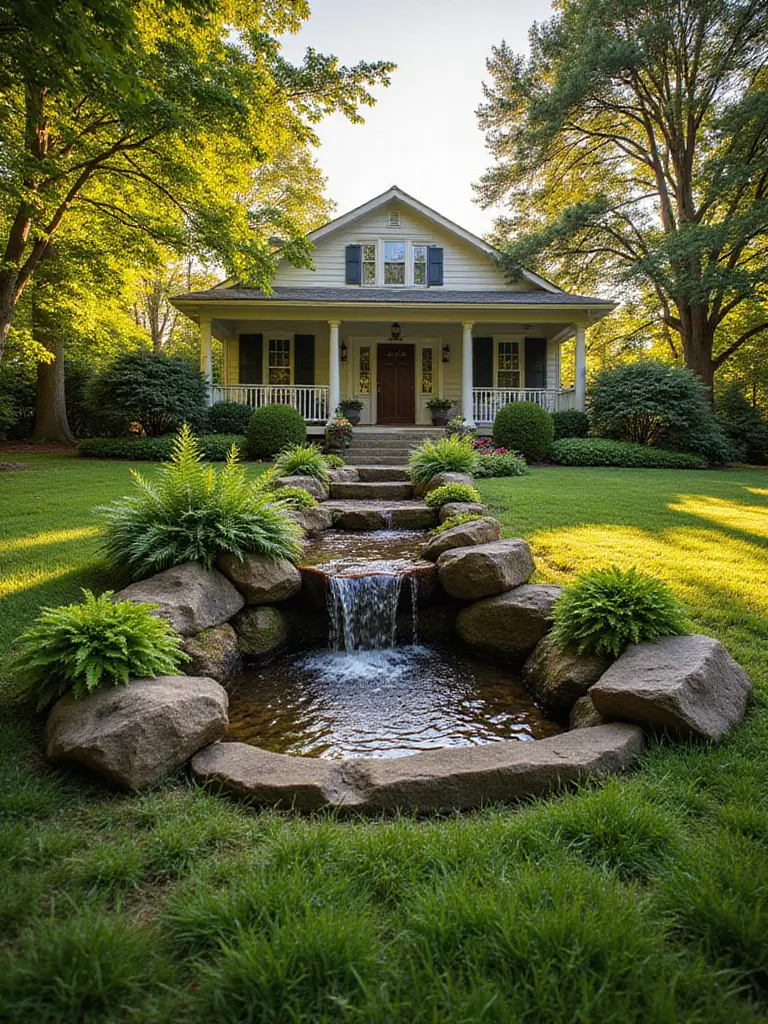
Self-contained fountains offer easy installation and minimal maintenance, while bubbling rocks provide natural appeal with simple mechanics. Pondless waterfalls deliver the sound and movement of falling water without the maintenance of a pond. Even a simple bird bath adds wildlife interest while requiring minimal investment.
Let that sink in for a moment… the sound of water has been shown to reduce stress and anxiety levels, making your front yard a therapeutic space. Now let’s plant something spectacular as a focal point.
16. Plant a Grand Statement: Feature Trees in Front Yard Design
A well-placed tree can become the centerpiece of your front yard design. Beyond visual appeal, a feature tree provides shade, increases property value, and creates habitat for birds and beneficial insects.
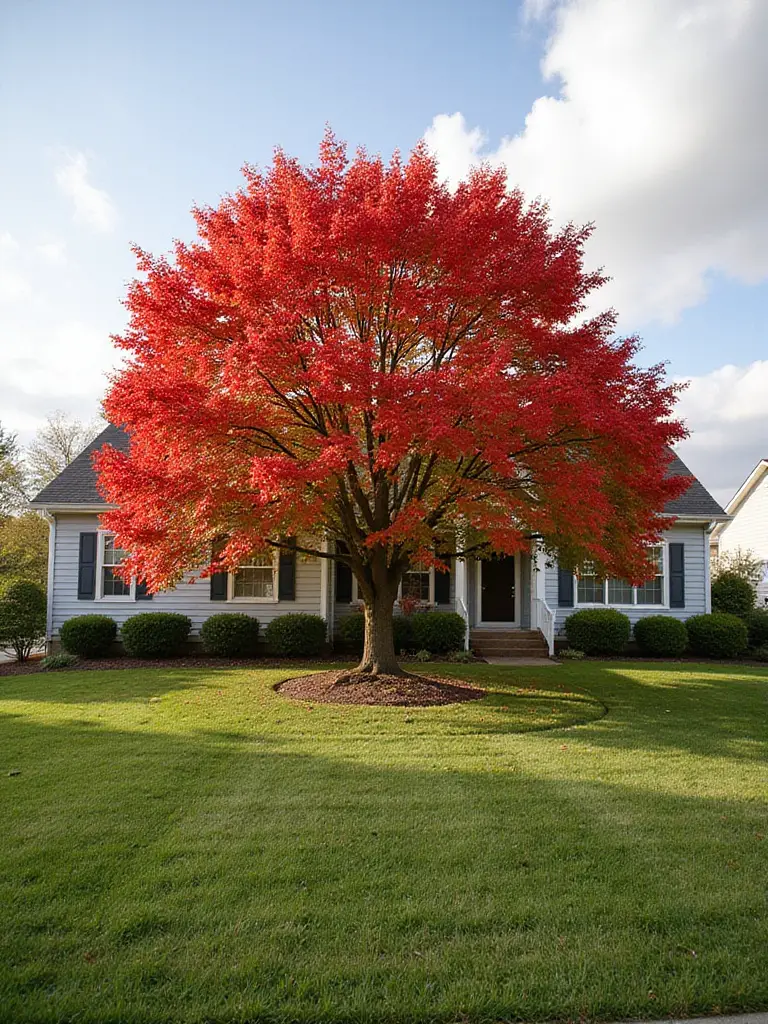
When selecting your statement tree, consider:
“Choose a tree that offers multiple seasons of interest—spring flowers, summer shade, fall color, and perhaps interesting bark or structure in winter.”
Popular choices include Japanese maple for delicate texture, flowering dogwood for seasonal beauty, or crepe myrtle for long-lasting summer blooms. Underplant your feature tree with complementary perennials or groundcover to create a complete vignette.
The stumbling block is anticipating the tree’s mature size and shape to ensure it won’t outgrow its space or interfere with utilities. For those seeking a more contemporary approach to front yard design, let’s explore gravel gardens.
17. Modern Minimalism: Gravel Gardens for Contemporary Front Yard Design
For a sleek, low-maintenance front yard design with contemporary appeal, gravel gardens offer an excellent solution. These water-wise landscapes combine drought-tolerant plants with decorative stone to create striking visual impact with minimal upkeep.

Drought-resistant perennials like sedum, lavender, and ornamental grasses thrive in gravel gardens, their architectural forms standing out against the textured background. Mediterranean herbs add fragrance and culinary benefits. Incorporate sculptural elements like large rocks, driftwood, or metal art to create focal points that complement the minimalist aesthetic.
What unfolded next was discovering how these gardens not only look modern but also perform better in our changing climate, requiring less water and maintenance than traditional landscapes. Let’s finish our front yard design with those crucial final details.
18. The Finishing Touches: Address Numbers and Mailboxes as Design Elements
Don’t underestimate small details! Address numbers and mailboxes are crucial finishing touches in front yard design that blend function with style. These elements offer opportunities to showcase personal taste while complementing your home’s architecture.
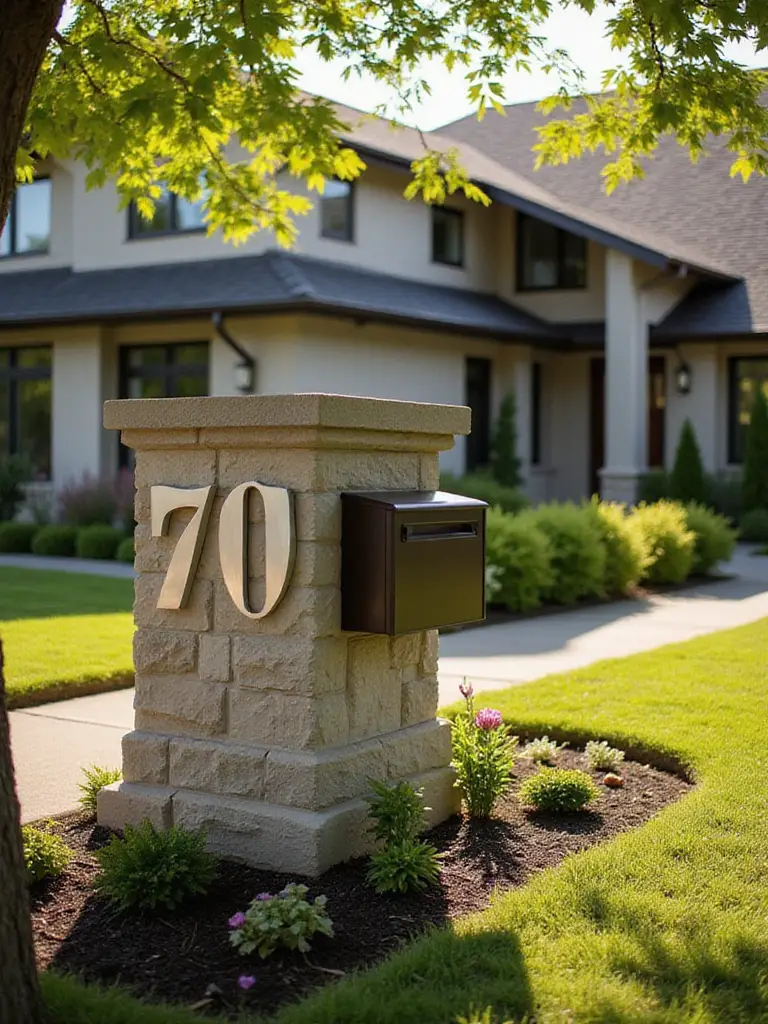
For address numbers, consider your home’s style—sleek metal for modern homes, ornate fonts for traditional architecture. Ensure they’re large enough to read from the street and properly illuminated for nighttime visibility. Mailboxes can be customized with materials that match your home or surrounded by small garden beds that integrate them into your overall landscape.
The missing piece is often how these elements connect with the rest of your front yard design. Mount address numbers on a stone pillar or incorporate them into a planter box. Surround your mailbox with complementary plants that don’t obstruct access or visibility.
Conclusion: Your Front Yard Design Journey
Transforming your front yard is both an investment in your home’s value and your daily enjoyment. Each of these 18 design ideas offers a unique way to enhance your outdoor space, from welcoming walkways to striking water features. The beauty of front yard design lies in personalization—mixing elements that reflect your style while complementing your home’s architecture.
Whether you implement one idea or several, remember that successful front yard design evolves over time. Start with a solid plan, but allow room for inspiration and adjustment as you see how different elements work together. Your perfect front yard awaits—one that not only impresses visitors but welcomes you home with beauty and serenity every day.
